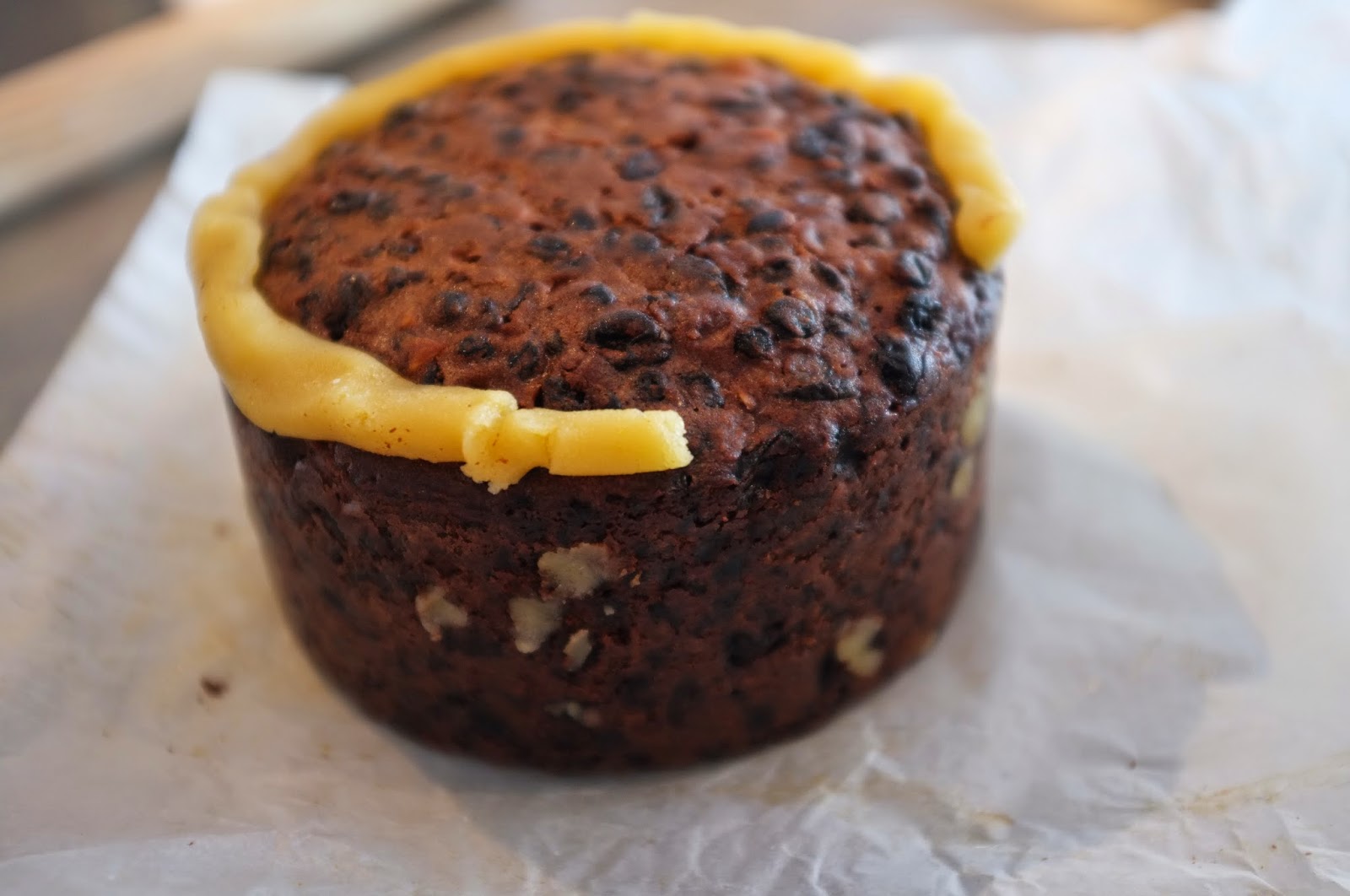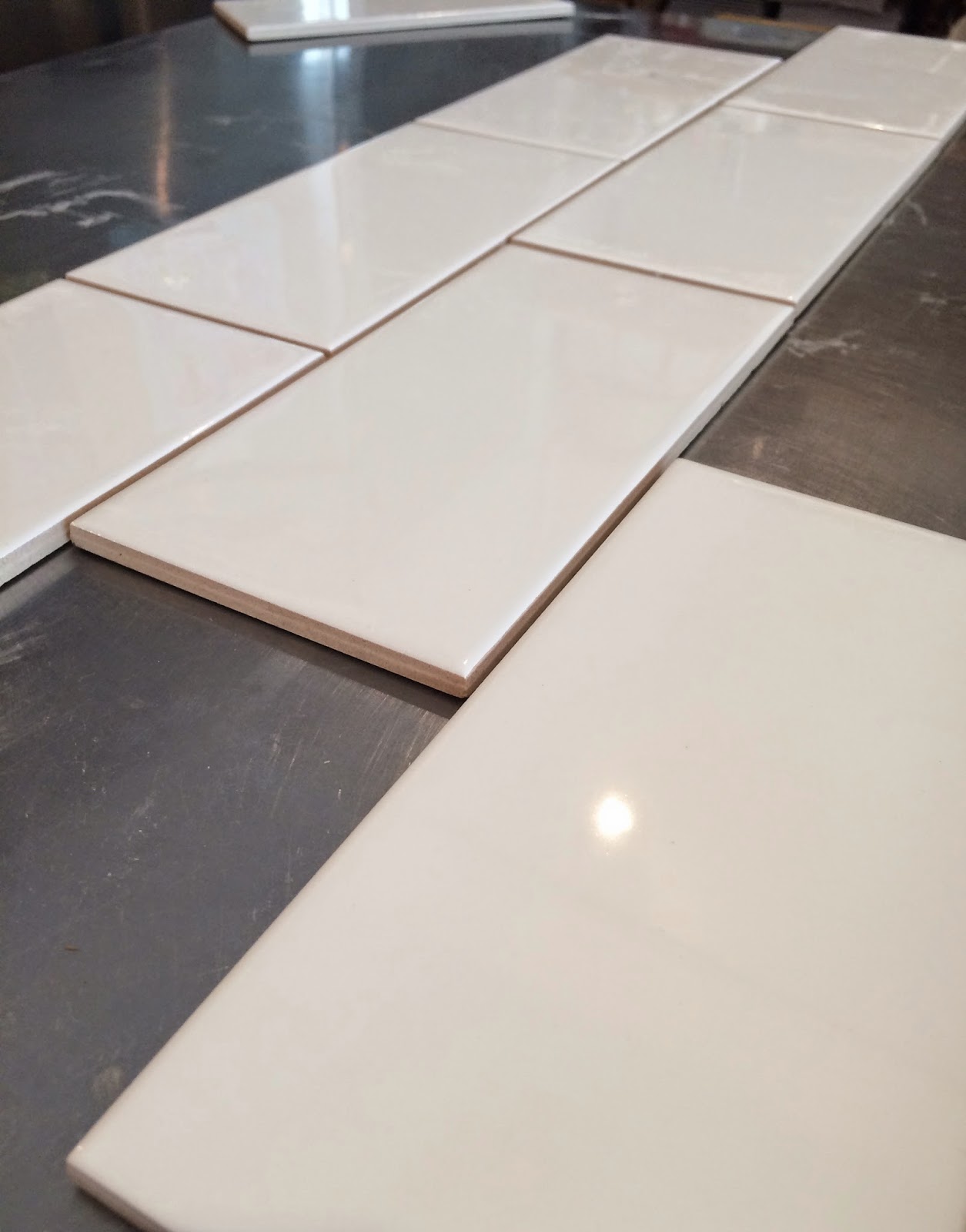 |
| The top tier, ready for feeding with brandy |
For Christmas last year I experimented with taking sugar flowers and a fondant-iced and royal-iced traditional Christmas fruitcake to my sister in England, for a taste test and to see if the cake could travel well in my suitcase.
This trial run was successful and as I type this part of the blog post I'm back on another plane, 6 months later, with a much larger fruitcake, a smallish one, and a ganached and fondant-covered chocolate cake to use for the day itself... Please, Virgin Airways, please don't lose my case, don't throw it around too much and don't drop it!
The two fruitcake tiers of the wedding cake began life over a month ago, just after my kitchen was up and running. I would have liked a longer time to mature the cakes, but hoped that a month with regular feeding with brandy would be enough to develop some good flavour. I baked a couple of practice fruitcakes and moved onto the monster bottom tier which is 26 cm in diameter by about 10cm height.
It's, oh I don't know, it must be almost 4kg all on its own with all that fruit! It practically fills my case in its hefty box, leaving just enough space for a smaller tin for the top layer, oh, that and my 'Cadbury's purple' bridesmaid dress (thanks sis) ;).
The top and bottom tiers are going to be traditional wedding cakes. Fruit: currants, raisins, sultanas, homemade mixed peel, apricots all soaked in brandy and later added to orange and lemon zest, nuts, molasses, homemade mixed spice and cinnamon, brown sugar etc. It's a heady and heavy concoction. The middle tier will be a moist chocolate cake filled and covered in rich ganache and then covered in purple fondant to match the bridesmaid dresses.
Once tied up in paper to protect against the long bake, and baked for hours - making my balmy April Tokyo kitchen smell like November in England - the cakes are fed with more brandy and packed away to mature.
The feeding with brandy was repeated numerous times over the coming weeks, and the cake was stored in the 12C cool table - a decision made due to the impending hot and humid Tokyo weather, because we want a matured cake and not a truly fermented one.
The weekend before I set off to England and the time came to marzipan (also home made, and yes I just used the word marzipan as a verb, oh dear). Trying out a few tricks I found in an old cake decorating book, I plugged with marzipan some of the larger dimples in the cake that had been formed by raisins getting sucked inward during baking, and built a collar around the rounded edge of the top of the cake, that was to become the bottom. This was then left to dry out completely for a few days before applying the icing.
Despite the superior taste of royal icing, we went for rolled fondant. The main reasons were that fondant is much easier to cut (for the cake cutting ceremony smoothness (!) and for slicing into the traditional 1-inch sticks of cake with all guests), and that we wanted to stack the cakes directly on top of each other in 3 layers. Stacking like this requires dowelling the cake, for stability, and this isn't advisable/possible with a royal iced cake.
Perhaps if we had gone with all 3 layers of wedding cake being made of fruitcake (and quite thick royal icing) we could have placed the cakes directly atop each other, but with one of the cakes being a softer, chocolate cake, I didn't want to risk it collapsing under the weight of the top fruitcake tier on my sister's big day. Fondant and dowels it was then.
The flowers were chosen to match the theme of the wedding - purple and ivory. My sister's bouquet is to be made from purple calla lilies and ours, as bridesmaids will be white. Above and below are some pictures of the practice cake and early stages of making some of the flowers.
Join me again shortly, for the next thrilling installment of the wedding cake adventure story. Did it make the trip?..!


















































